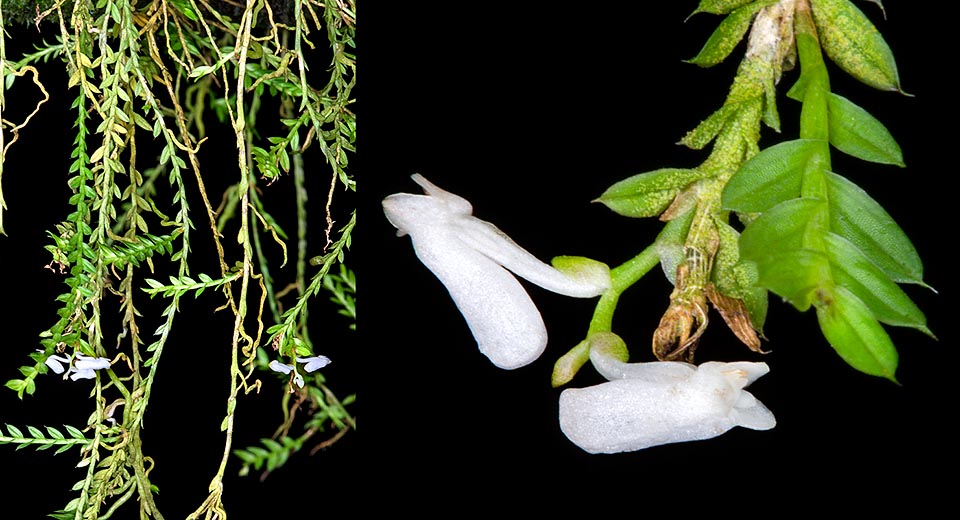Family : Orchidaceae

Text © Pietro Puccio

English translation by Mario Beltramini
The species is native to Borneo, Java and Sumatra where it grows on the trees of the humid forests or on rocks covered by moss up to about 1500 m of zltitude.
The name of the genus is the combination of the Greek substantives “πούς, ποδός” (pús, podόs) = foot and “χεῖλος” (cheilos) = lip, with reference to the shape of the labellum; the specific name is the combination of the Latin substantives “serpyllum, i” = thyme (Thymus serpyllum L., 1753) and “folium, ii” = leaf, with obvious reference.
The Podochilus serpyllifolius (Blume) Lindl. (1858) is an epiphytic species with filiform stems, ramified, 8-15 cm long, and linear-lanceolate distichous leaves with pointed apex, 4,5 mm long and 1,5 mm broad, spaced of about 1 mm. Terminal racemose inflorescences, 1,5-2 cm long, bearing 3-4 tiny flowers, about 5 mm long, of white colour with persistent floral bracts, sepals merged at the base forming a sort of long obtuse spur (mentum) and ovate undivided labellum.

Native to Borneo, Java and Sumatra, where it grows on the humid forests trees or on moss covered rocks up to about 1500 m of altitude, Podochilus serpyllifolius has filiform ramified 8-15 cm stems and terminal racemose inflorescence with 3-4 tiny flowers, about 5 mm long. Species very rare in cultivation © Giuseppe Mazza
Species rare in cultivation, requires a semi-shady position, intermediate temperatures, high humidity and constantly moving air. Regular waterings during the year utilizing rain water, demineralized or by reverse omosis. It is usually mounted on trunks, pieces of bark or rafts of cork or of roots of arborescent ferns, with sphagnum at the base in order to keep the humidity. Possible transplants are to be done at the vegetative restart.
The species is reported in the appendix II of CITES (species whose trade is internationally ruled).
Synonyms: Cryptoglottis serpyllifolia Blume (1825); Hexameria disticha R.Br. (1838).
→ For general notions about ORCHIDACEAE please click here.
